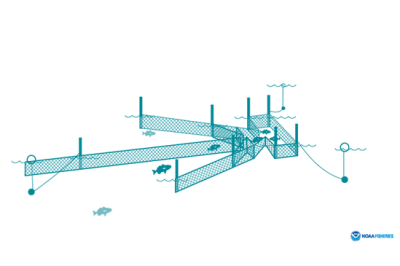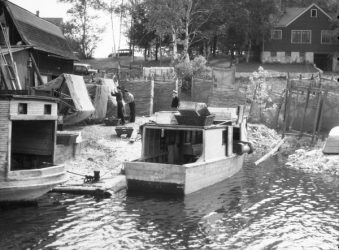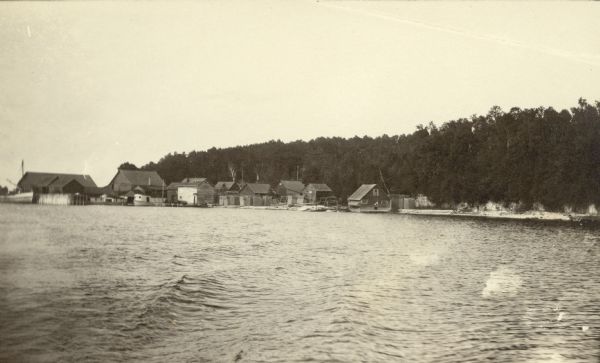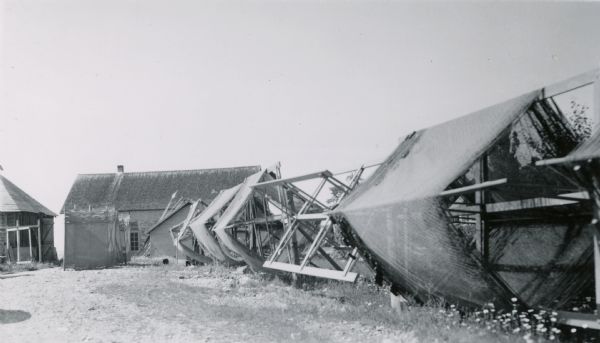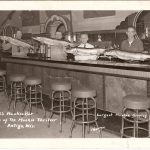The impact of the fishing industry on Door County cannot be understated, as it held the keys for the original formation of the County and many of its cities and villages. Although commercial fishing has waned, the tradition persists in area as fishermen who still troll the waters of Green Bay and Lake Michigan. Today, the remaining commercial ventures are typically family-run businesses who pass on their knowledge to new generations in hopes of continuing on the family legacy.
Lake Michigan’s ability to secure high levels of fish made it a great destination for fishermen to settle and establish careers. From time immemorial, Native Americans have farmed fish from the shores of Door Peninsula. Forced removal and white settlement allowed Euro-American fishing outfits to come to dominate the market by the 1850s, though Indigenous people continued to harvest fish for their own purposes and found employment in these companies. The Door County fish industry emerged in response to an increased demand for whitefish in the markets of cities like Green Bay and Detroit, and white fishermen strong-armed Native peoples out of their former fishing grounds for their own gain. The expansion of the rail system across the Midwest further enabled the transportation of fish throughout the Midwest, and contributed to an industry boom.
By the mid-1850s, a popular style of fishing in the area included the use of the pound net, an invention that allowed the fishermen to increase their loads. Pound nets (short for impoundment), consist of an assembly of mesh nets attached to anchors or pilings, that funnel fish into a tunnel that does not allow them to exit. They are often used close to the shore and can be seen from water level, making them easy to view. The use of these nets quickly spread across the northern area of Lake Michigan, as it allowed fishermen an easy way to capture a high volume of fish in a short amount of time. Fisheries were established on both Washington and Rock Islands in the 1850s, with Washington Island having established three docks and several fishing communities by 1860.
According to research done by Trygvie Jensen, Washington Island fishing often consisted of family operations with everyone pitching in to some extent. Regardless of the weather, fishermen had the expectation to get lines out on the lake before sunrise and had to meet the deadline of five pm, since the ferry provided the only way to transport their harvest. After the ferry set off, they would set their nets for the next day before heading home for around four hours of sleep. These men faced many hardships throughout their careers, but set the tone for the island’s fishing culture.
The fishing that occurred in Door County consisted of three aspects–harvesting, processing, and marketing. The chief responsibilities of the fishermen included harvesting the fish and delivering them to the dealers. Fish dealers took on the dirty work of processing the fish, and then marketing the products to consumers. Because of this, dealers determined the fishermen’s livelihoods by maintaining control of market prices and determining the value of the fishermen’s harvests. Additionally, dealers controlled the business of transportation and therefore the fulfillment of orders.
Between the late-1870s and the mid-1880s the industry saw a considerable decrease, which led to fewer fishermen active in the area. The drastic decline in production lasted less than a decade, and those who stuck it out were handsomely rewarded when demand picked up again in the late-1880s. By the end of the century, fishing had become the state’s most lucrative industry, and Door County led the harvest.
Written by Jack Cultra, April 2024.
Sources
Holand, Hjalmar Rued. History of Door County, Wisconsin: The County Beautiful. Chicago: S.J. Clarke Publishing Co., 1917.
Jensen, Trygvie. Wooden Boats and Iron Men: History of Commercial Fishing in Northern Lake Michigan & Door County, 1850-2005. De Pere, Wisc.: Paisa Publishing Co., 2007.
National Oceanic and Atmospheric Administration. “Fishing Gear: Pound Nets” NOAA Fisheries. Website. Last updated 12 Feburary 2019. https://www.fisheries.noaa.gov/national/bycatch/fishing-gear-pound-nets/. (Accessed 24 April 2023).
Williamson, Patty. “Commercial Fishing: The Way It Used to Be.” Door County Pulse, 27 June 2013. https://www.doorcountypulse.com/commercial-fishing-the-way-it-used-to-be/. (Accessed April 2023).
